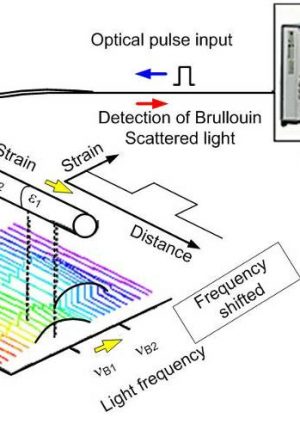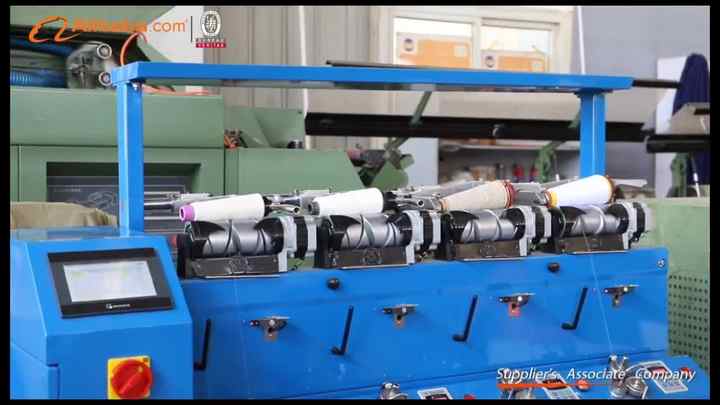Key Factors When Evaluating an Optical Fibre Diameter Analyser
Key Factors When Evaluating an Optical Fibre Diameter Analyser
Blog Article
Optimize Your Fiber Optic Efficiency: Recognizing Optical Fiber Diameter Analyser Technology
The performance of fibre optic systems is critically affected by the accuracy of their size, an element frequently forgot in the quest of optimal signal stability. Understanding the modern technology behind optical fibre diameter analysers exposes the complex balance in between dimension precision and production top quality. These tools not just improve compliance with sector requirements however also give real-time understandings that can preemptively address possible problems. The effects of their usage extend past plain dimension; they can basically modify the landscape of fibre optic performance. What elements should one take into consideration to harness their complete potential?
Relevance of Optical Fiber Diameter
The size of optical fiber plays a crucial duty in figuring out the performance and efficiency of communication systems. It affects numerous essential parameters, including the setting of light breeding, attenuation, and bandwidth capability. Larger sizes commonly enable multiple light modes, facilitating greater data transmission prices. Conversely, smaller sizes often tend to sustain fewer settings, which can boost signal quality and decrease crosstalk.
Additionally, comprehending the size's ramifications can lead to cost savings by minimizing the requirement for signal amplification and repeaters in substantial networks (optical fibre diameter analyser). Finally, the value of optical fibre size can not be overstated, as it directly affects the general efficiency and reliability of modern-day communication systems

How Size Impacts Signal Quality
Signal top quality in optical fiber systems pivots substantially on the size of the fiber. A smaller size can lead to higher attenuation prices, resulting in signal loss as light journeys with the fiber.
On the other hand, bigger sizes generally allow for enhanced light capture and decreased modal dispersion, enhancing signal clarity. In multimode fibers, a bigger core diameter can support multiple light modes, however it may also introduce intermodal diffusion, which can degrade signal quality. Choosing the optimum fibre diameter is essential for attaining the wanted performance in certain applications.
Additionally, the interaction between the fibre diameter and the wavelength of the light utilized plays an essential duty in figuring out the efficient transmission range and general signal stability. Comprehending just how fibre size impacts signal high quality is essential for network developers and engineers making every effort to enhance optical fiber systems for trustworthy, high-speed data transmission.
Overview of Diameter Analyser Innovation
In numerous optical fiber production processes, exact measurement of fibre diameter is crucial for ensuring constant efficiency and high quality (optical fibre diameter analyser). Diameter analysers are sophisticated instruments created to examine the physical measurements of optical fibers with high accuracy. They employ innovative optical and laser technologies to measure the diameter, ovality, and concentricity of the fibre, hence supplying essential information for quality assurance
These analysers can run in-line throughout the production process or as component of off-line screening procedures. In-line systems make it possible for real-time monitoring, permitting producers to adjust parameters quickly, consequently keeping optimum manufacturing conditions. Off-line analysers, on the other hand, offer thorough analyses of sets, ensuring that any kind of inconsistencies from specified tolerances are identified and dealt with.
Diameter analysers considerably add to the decrease of issues in optical fibres, improving total product dependability. By continually gauging vital specifications, these modern technologies assist in compliance with sector requirements and specs. As the need for high-performance optical fibers continues to climb, the role of diameter analysers comes to be increasingly essential in attaining the desired quality and efficiency requirements in fibre optic systems.
Key Features of Fibre Diameter Analysers
Although numerous versions of fibre size analysers exist, they generally share a number of key features that improve their performance and reliability. Among one of the most considerable features is high-resolution measurement capacities, which make sure accurate size readings, crucial Recommended Reading for preserving quality assurance in fibre production. In addition, many analysers incorporate advanced optical sensing units made to identify minute variations in fiber diameter, hence providing very useful information for process optimization.
Another important attribute is real-time monitoring, enabling operators to obtain immediate feedback on fibre diameter throughout the manufacturing procedure (optical fibre diameter analyser). This capacity facilitates fast changes and decreases the chance of issues. Many analysers likewise come geared up with user-friendly interfaces, enabling drivers to quickly browse via information and setups outputs
Furthermore, durable information storage and evaluation capabilities are important for tracking historic efficiency fads and making certain conformity with market criteria. Some models also use connectivity choices for assimilation into existing production control systems, improving overall functional efficiency. Portable and mobile styles allow for flexible implementation within manufacturing environments, ensuring that top quality guarantee processes are seamless and reliable. These features collectively add to the efficacy of fiber size analysers in maximizing click here for info fiber optic efficiency.
Best Practices for Fibre Optimization

First, normal calibration of optical fiber diameter analysers is essential. This ensures precise dimensions and decreases potential discrepancies that can influence efficiency. Next off, preserving a clean workplace is vital; dust and impurities can result in signify destruction.
In addition, it is vital to select fibers that satisfy specific application requirements. This includes evaluating factors such as attenuation, data transfer, and environmental problems. Proper installation methods must additionally be adhered to, consisting of preventing sharp bends and too much tension, which can endanger fiber integrity.
In addition, using innovative tracking systems can promote real-time efficiency evaluations, allowing timely identification of issues. Normal screening and upkeep must be carried out to ensure that fibers stay within ideal functional parameters.
Finally, training employees on the newest fibre optimization modern technologies more and techniques will enhance their ability to carry out efficient strategies. By following these ideal techniques, companies can considerably improve the performance and life-span of their optical fiber systems, ensuring reliable interaction and data transfer.
Verdict
Finally, the combination of optical fiber diameter analyser innovation is vital for maximizing fibre optic efficiency. By making sure precise measurements of fibre measurements, these analysers considerably improve signal top quality and reduce losses during information transmission. Normal calibration and maintenance of the analysers are critical to maintain optimum performance and compliance with market criteria. Eventually, the application of this technology helps with improved information transmission rates and strengthens signal stability, adding to the general performance of fibre optic systems.
Signal high quality in optical fiber systems hinges substantially on the diameter of the fiber.In many optical fibre manufacturing processes, accurate measurement of fibre size is important for making sure regular performance and top quality. As the need for high-performance optical fibers continues to climb, the duty of size analysers becomes increasingly vital in accomplishing the desired high quality and efficiency requirements in fiber optic systems.
These attributes collectively contribute to the effectiveness of fiber size analysers in enhancing fiber optic efficiency.
In verdict, the assimilation of optical fibre diameter analyser innovation is essential for making best use of fiber optic performance.
Report this page